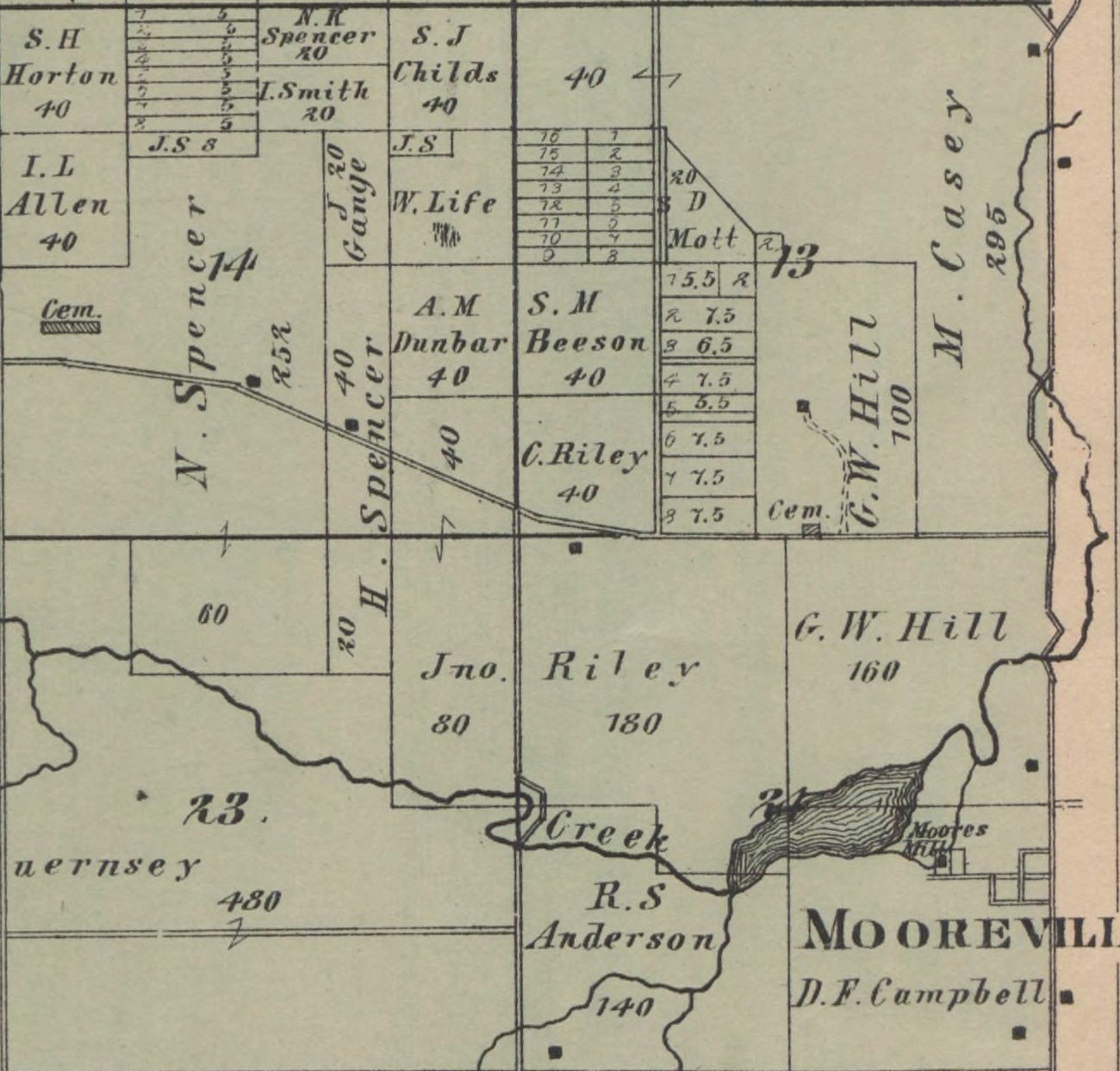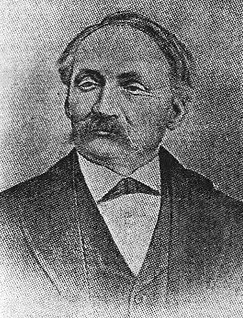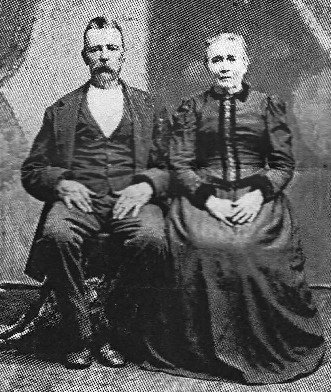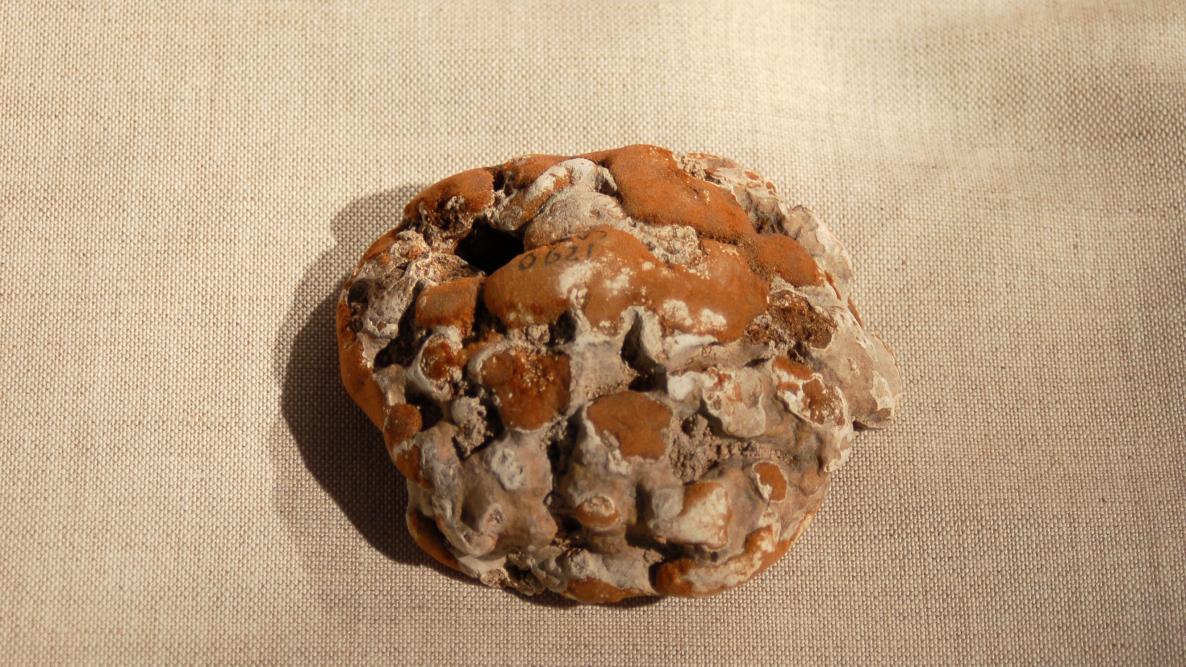Iowa is dotted with numerous towns which were started and later abandoned. Many of these have a lone marker but many are just memory to the locals. The Iowa Ghost Towns website lists almost 50 such places in Tama County alone. One such town is Mooreville which was located between Dysart and Waterloo on what is now County Road V37. The last house of the settlement which was occupied into the 1970s has since been torn down. All that remains is a marker and some small cemeteries which are home to the remains of its founding citizens. Located in section 24 of Geneseo Township in Tama County, Mooreville had a post office from 1871 until 1900.

Mooreville Postmark 1896
Before the settlement at Mooreville was established the area had a different name, Six Mile Grove. The town’s hopes of a prosperous future were dashed when the railroad was established in Dysart instead of Mooreville. It’s too bad. It’s a beautiful part of Tama County and would have made a nice setting for a town with the Wolf Creek running through it and the lovely trees that fill the hills in this area.

1875 Plat Map Tama County – Geneseo Township
The first white settlers in the Mooreville area were the Hills and the Riley’s. The two families arrived in the Spring of 1853 with Joseph Hill being the patriarch of the family and John Riley his son-in-law. John was married to Joseph and Sarah Hill’s daughter, Charity. Joseph and his wife, Sarah, had eight children who settled the area with him and continued his legacy after his death in 1855. Their journey to Geneseo Township and subsequent settlement in that area are chronicled in the “History of Tama County Iowa” which is available online here. A section of the Traer Historical Museum is dedicated to the Geneseo area.
 Joseph Hill |
 Sarah Hill |
 John and Charity Riley |
In the summer of 1882, the Hill farm was being operated by Joseph and Sarah’s son, George and his wife Cornelia. Their daughter, Mary had married Alpheus Goodpasture and relocated to Fort Scott, Kansas. According to the Courier (Waterloo), Arthur Goodpasture, their grandson, had come for a visit with George and his mother, Sarah. Sometime in May, Arthur heard a noise in the barn and went out to check for the source of that noise. On his return trip to the house a strange dog jumped upon his back. When he turned to grapple with the dog, he was bitten on the wrist and forefinger of the right hand. He was unable to free himself from the dog’s bite and the hired man was forced to pry open the jaws of the dog before the hand was released. The dog was shot but not before it had bitten two horses and two calves. The horses and one of the calves died of rabies. The other calf went mad and had to be shot.
Mr. Goodpasture showed no symptoms of his bite for about six weeks but then started complaining of hydrophobia on a Sunday night in July. He was unable to swallow water placed in his mouth. By Monday evening he had chills and was given a dose of quinine. He continued to get worse. Dr. Griffin of Vinton, Dr. Evarts of Waterloo and Dr. Knott of Mooreville were all called and concurred that the patient was suffering from hydrophobia caused by rabies. The physicians called for the “celebrated mad stone” from forty miles away but this was of no effect. Arthur remained conscious until the end. Pain relieving medications were given but he continued to have severe spasms. He died on Wednesday of that week. He was about 25 years old and left behind a wife and an eighteen month old son.

What is a Mad Stone?
Before a cure for rabies was developed by Louis Pateur in the late 1800’s Mad Stones (also known as bezoar stones) were used to treat rabies and snake bites. The practice goes back several centuries. A mad stone is formed in the stomach or intestines of cud-chewing animals. In American folklore, the most powerful of these come from albino deer with pink eyes. In essence it is a hair ball composed of mineral salts, hair and fiber ingested by the animal. They form from calcium deposits similar to how an oyster forms a pearl. The calcium clings to some foreign material such as hair and slowly adds more layers. If you cut through one you would find rings, similar to a trees growth rings.
Before using, the stones were boiled in sweet milk. The wound to be treated needed to be bleeding and if it was not the skin had to be scraped until it did bleed. If it did not adhere, it was assumed the person did not have rabies. However if rabies was present, the stone would attach itself to the flesh for a long time, drawing the poison out and absorbing it into the stone. When it fell off the wound it would be boiled in milk again to release the toxins. The stone would then be applied to the wound again. If it did not stick, the person was considered cured. If it stuck it would be left to draw the remainder of the toxin out of the body. According to lore, a mad stone can neither be bought or sold to remain effective. They were generally passed down from father to son but their presence in a home was known by those who lived nearby and their owners were frequently called upon to help. The stone’s shape could not be changed or it would lose it’s effectiveness. Additionally, using the stone was not intended to involve any kind of payment. The location of “Iowa’s Celebrated Mad Stone” is unclear. A search of newspapers.com produces over 350 results for the use of mad stones in Iowa between 1854 and 1940. Several references are made to one in Paris, Iowa.
Did they work?
Likely not. Rabies can take up to a year to develop after a bite occurs. Someone treated with a Mad Stone immediately after a bite could still develop the virus months down the line. Rabies is also not as easy to catch as one may think. Depending on where a person is bitten the chance of developing the disease are between 10 -90%, with face and head bites being the most dangerous. Like all folklore however, its effectiveness may have been more in the belief than the actual stone but either way, they provided hope to people in what seemed like very hopeless circumstances.
If you enjoyed this article, please consider subscribing to this blog page!